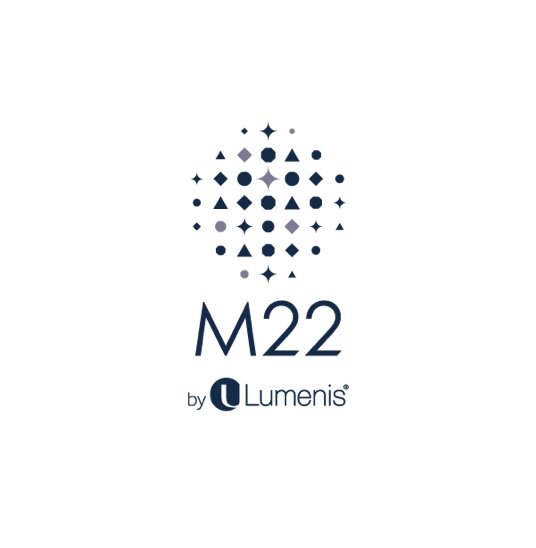PHOTOFACIAL (IPL/BBL)
What is a Photofacial?
A Photofacial uses Broad Band Light (BBL) that is pulsed into the skin, also called Intense Pulsed Light (IPL) therapy. The light energy is delivered into the skin, targeting pigmented lesions (freckles, age spots, sun damage), vascular lesions (small blood vessels, redness or rosacea), and acne. Photofacials also have a rejuvenating effect by changing the expression of genes associated with aging and longevity improving firmness and overall tone and texture.
How does it work?
Light energy is delivered by the Lumenis M22 hand piece that heats the upper layers of the skin.
The energy and specific wavelengths of light delivered are absorbed by the targeted areas (pigment, small blood vessels or acne bacteria) and broken down.
Skin cells are stimulated to regenerate new collagen and elastin fibers.
Multiple treatments might be required for best results. The areas being treated are different pigment densities and at different depths of the skin. Generally people need between 3-6 treatments.
$400 face/neck
$500 face/neck/chest
How to prepare for your treatment
Before an IPL treatment:
Make sure you are a good candidate for this procedure.
-If you are pregnant or breast feeding, you can not be treated.
-If you have been treated with accutane within the last six months, you can not be treated.
-If you have a history of vitiligo or melasma, this treatment can make it worse.
-Diseases like lupus and porphyria can be exacerbated by photofacial.
-If you have a past history of skin cancer and/or have recent changes to skin lesions you would need to be evaluated by your dermatologist and be pre cleared before treatment.
-If you have a history of keloid scarring, please let us know prior to treatment we can talk and evaluate your risk.
Make sure your skin is ready for the treatment:
-Cold Sores: If you have cold sore outbreaks more than several times a year, you will need to be pretreated with Valtrex to prevent an outbreak.
-Sun exposure and self/spray tanners: Avoid direct sunlight, tanning beds and self/spray tanner for at least 3-4 weeks before your treatment. Wear sunscreen with at least SPF 30.
-Medications that cause photosensitivity: Avoid taking tetracycline, minocycline, NSAIDS (ibuprofen, naproxen and ketoprofen), St. John’s Wort and Ginkgo Biloba for 1 week before your treatment.
-Skin irritants and exfoliating: Avoid using products that contain tretinoin, retinol, benzoyl peroxide, glycolic or salicylic acids, astringents, or vitamin C for one week before your treatment.
-Waxing or depilatory creams: Avoid waxing or using depilatory creams on the treatment area for one week before your treatment.
What to expect on treatment day
-One hour before your appointment, you can take 1000mg of Tylenol to help with the potential discomfort.
-Arrive with a clean skin, free of makeup.
-When you arrive at Simplicity Aesthetics, you will have before pictures taken and your skin will be cleansed and a topical numbing cream will be applied, unless your specific skin concern would be better treated without numbing.
-While you are numbing any last minute concerns will be addressed and your skin type will be assessed on the Fitzpatrick scale to select appropriate settings for your treatment.
-The numbing cream will be removed and your skin will be cleansed. A cool gel will be applied to your skin and you will be fitted with metal eye protection. The hand piece delivers the light through a cooling crystal. With each pulse, the cooling crystal will pre and post cool your skin. When the pulse of light is delivered, it feels like a snap from a warm rubber band.
-Once the treatment area is covered with pulses of light, a cool cream will be applied to your skin and a cool gel pack will be placed on your skin. Post treatment instructions will be reviewed. That will conclude your visit.
What to expect after your treatment
Downtime after an IPL photofacial is generally minimal, but you can expect some healing time:
Redness and swelling: Your skin may be red and swollen for a few hours to a couple of days after the treatment.
Hypersensitivity: Your skin may feel sunburned and hypersensitive for a couple of days.
Pigmented spots: If pigment issues were targeted, you may notice pigmented spots that look like pepper flakes or coffee grounds. These spots will rise to the surface of your skin and fall off within a few days. Do not pick at the spots, as this can cause scarring.
Healing time: The overall healing process takes about a week.
Here are some tips for minimizing downtime and promoting healing:
Avoid sun exposure and use a broad-spectrum sunscreen with SPF 50+.
Avoid vigorous exercise for a couple of days.
Treat your skin gently with mild cleansers and moisturizers. Avoid scrubs, acids, and retinoids.
Stay hydrated by drinking plenty of water.
Apply ice packs or a cool compress to the treated area to ease discomfort.
If you are worried about anything in your recovery, please let me know! The best way to get me is to take a picture of what is concerning you and text it to 614-401-6363 with your question. I am always here to help!





